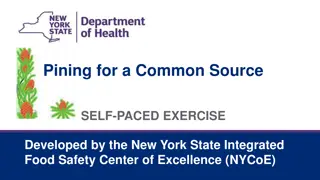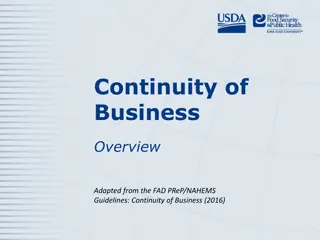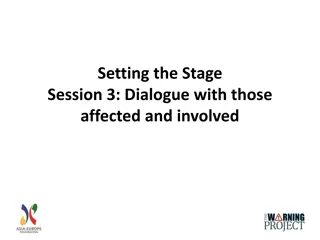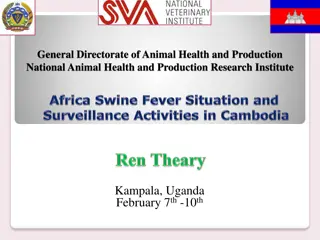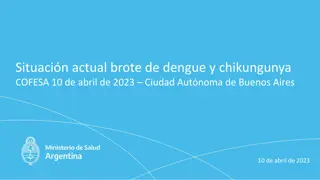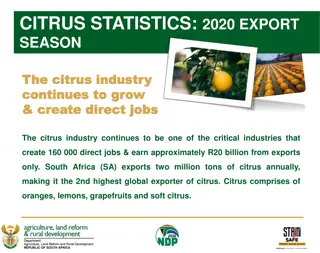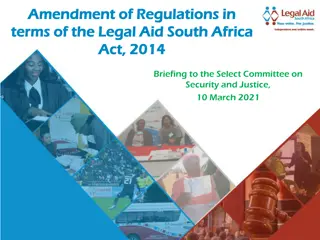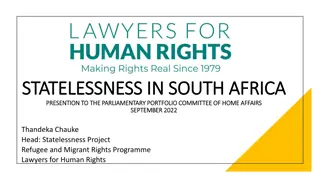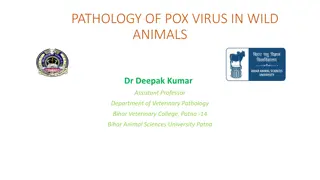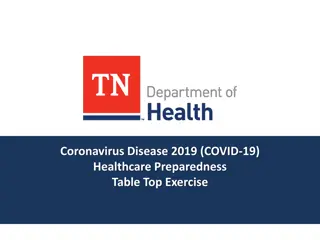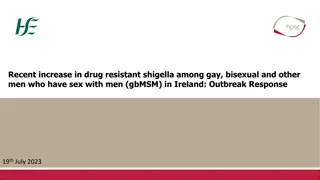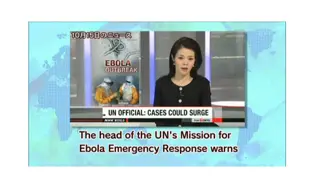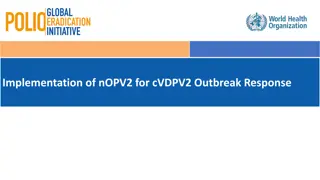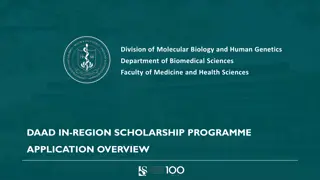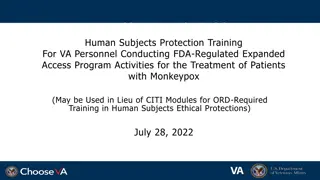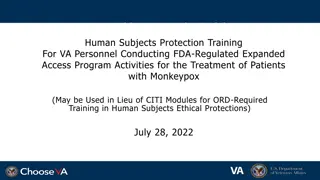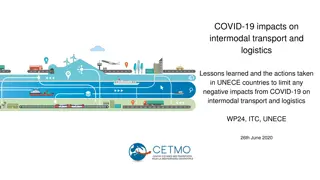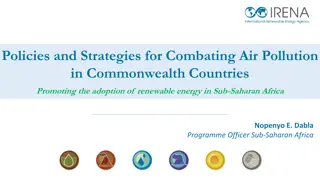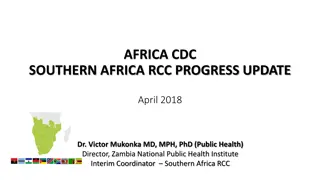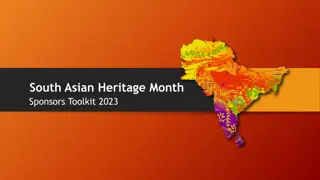Monkeypox Outbreak in South Africa: Updates and Actions Taken
Monkeypox cases have been reported in South Africa, with a total of five confirmed cases and no deaths as of September 2022. The World Health Organization (WHO) has declared the outbreak a public health emergency of international concern and issued recommendations to contain the spread. Actions have been implemented, including a national risk assessment, gap analysis, and development of a multi-sectoral action plan. Discussions on monkeypox vaccines and surveillance improvements are ongoing.
Download Presentation

Please find below an Image/Link to download the presentation.
The content on the website is provided AS IS for your information and personal use only. It may not be sold, licensed, or shared on other websites without obtaining consent from the author. Download presentation by click this link. If you encounter any issues during the download, it is possible that the publisher has removed the file from their server.
E N D
Presentation Transcript
Monkey Pox in South Africa Portfolio Committee Meeting 28 September 2022
Monkeypox Presents with an unexplained acute rash or skin lesions AND one or more of the following signs or symptoms: o headache, acute onset of fever (>38.5 C), lymphadenopathy (swollen lymph nodes), myalgia (muscle pain/body aches) and backache AND for which the following differential diagnoses are excluded: chickenpox, measles, bacterial skin infections, syphilis, molluscum contagiosum, allergic reactions and other locally relevant common cause of papular or vesicular rash Since January 2022 to 19 September 2022, 61 753 laboratory-confirmed monkeypox cases, including 23 deaths, have been reported from 105 countries/areas/territories across all six WHO Regions (European Region, Region of the Americas, Eastern Mediterranean Region, Western Pacific Region, South-East Asia Region and African Region). o WHO Region of the Americas 36 783 confirmed cases o WHO European Region with 24 138 confirmed cases o WHO African Region is the third region reporting more cases with 587 laboratory-confirmed cases 2
SITUATION IN SA Since 22 June 2022 to date (21 September 2022), there have been five unlinked laboratory-confirmed monkeypox cases reported in South Africa with no deaths. No new laboratory-confirmed case has been reported since the last case reported on 17 August 2022. The cases in South Africa were reported from Limpopo (n=1), Gauteng (n=2) and Western Cape (n=2). There have been no secondary cases linked to the five confirmed cases. From 25 May to 21 September 2022, the National Institute for Communicable Diseases conducted 382 monkeypox laboratory tests (PCR) from individuals suspected of monkeypox disease within South Africa (n=268) and other African countries (n=114). This testing volume does not account for the testing conducted by private-sector laboratories. Full genetic sequencing for the first two cases reported (i.e., the first cases to be identified in Gauteng and in Western Cape Province) was conducted. The viral genomes clustered in the B.1 lineage of the Western Africa clade with other viral genomes associated with cases of the current multi-country outbreak. 3
ACTIONS On 23 July 2022, the WHO Director-General declared this outbreak a public health emergency of international concern (PHEIC) and issued temporary recommendations for countries in order to stop transmission and contain the outbreak. Several actions have been undertaken to address the requirements imposed through the WHO and related to the PHEIC status of monkeypox. o A national risk assessment and WHO-mediated gap analysis have been conducted, and a multi- sectoral action plan has been developed. o Discussions are also underway to determine the need for monkeypox vaccines and possible strategies for access to monkeypox vaccines. o Steps have also been taken to improve surveillance through employing an active case finding approach in partnership with non-governmental organizations, and improved accessibility of testing aimed at the at risk population. 4


